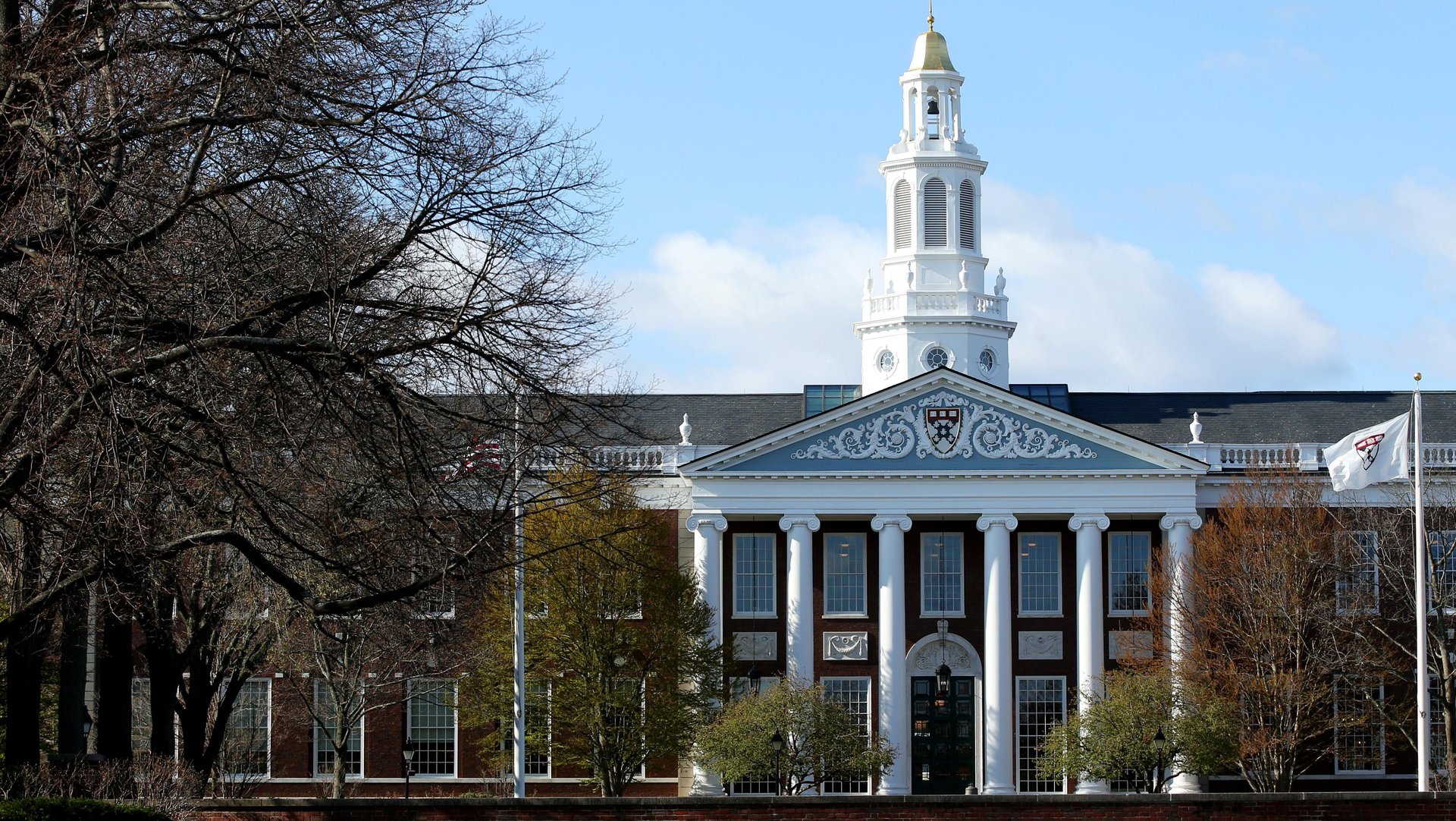The world’s largest academic endowment fund lost money for the first time in six years
Harvard Endowment posted a 1.8% loss in its investment, citing market headwinds and missed opportunities from sustainability commitments

Harvard University’s endowment is worth $2.3 billion less than last year.
The Harvard Management Company (HMC)—a nonprofit, wholly owned subsidiary of Harvard University that has managed the University’s endowment portfolio since 1974—posted a 1.8% loss on its investments in the year ending June 30, 2022, a financial report released Thursday (Oct. 13) shows.
Just like banks and corporations, rising inflation and higher interest rates have rattled academic endowment funds, too.
The “poor performance of global equity markets over the course of the year” was the major culprit behind the endowment’s first negative performance since 2016, the Harvard noted, citing sizeable drops in the S&P 500 (11%), Nasdaq Composite (23%), Nasdaq Small Cap (27%), and the ACWI (16%).
By the digits
$50.9 billion: Harvard endowment value in the fiscal year ending June 30, 2022—the largest in the academic world
14,000: number of individual funds invested as a singular entity
$2.1 billion: how much the fund distributed towards the university’s operating in the fiscal year ending June 30, 2022. The two largest funds cover faculty salaries and financial aid for students
36%: endowment distributions for operations in the year, which varies from school to school
80%: funds that are donor directed to specific programs, departments, scholarships, professorships, and so on
20%: unrestricted funds that are more flexible and “critical in supporting structural operating expenses and transformative, strategic initiatives,” according to the university
5-5.5%: Harvard’s target annual endowment payout rate
Did sustainability hamper higher returns for Harvard?
In line with Harvard’s net zero efforts, HMC “did not participate” in returns from “the conventional energy sector,” it says. While the impact is likely not huge since Harvard clubbed it under “less significant” factors, some hefty gains eluded the university: The S&P 500 energy sector has gained 23% so far in 2022.
Sustainability commitments seem to be taking precedence on the Cambridge, Massachusetts, campus and beyond. More and more universities are prioritizing sustainability and divesting fossil fuel assets despite their rising value.
However, scratch the surface and it quickly starts looking like lip service. For instance, Columbia University said it no longer has any direct investments in oil and gas companies, but kept the door open for businesses with credible plans to achieve “net-zero” emissions by 2050. Outside of investments, several prestigious universities accept fossil fuel funding, including, ironically, Columbia’s climate school and Stanford’s sustainability school. (Yes, Harvard, too.)
Charted: A correction year for university endowments
This year’s college endowment returns are a massive departure from last year’s results not just for Harvard, but for all schools. However, universities pointed out that last year’s boom was anomalous.
The see-saw, however extreme, won’t change plans. “Schools don’t set their budgets based on one year of investment returns, they set an endowment spending rate based on endowment performance over a longer period of time,” Jessica Wood, sector lead for higher education at S&P Global, says.
Is the $50.9 billion endowment for Harvard faculty and students?
Yes and no.
“There is a common misconception that endowments, including Harvard’s, can be accessed like bank accounts, used for anything at any time as long as funds are available. In reality, Harvard’s flexibility in spending from the endowment is limited by the fact that it must be maintained in perpetuity and that it is largely restricted. Endowment gifts are intended by their donors to benefit both current and future generations of students and scholars. As a result, Harvard is obligated to preserve the purchasing power of these gifts by spending only a small fraction of their value each year. Spending significantly more than that over time, for whatever reason, would privilege the present over the future in a manner inconsistent with an endowment’s fundamental purpose of maintaining intergenerational equity.” —Harvard University